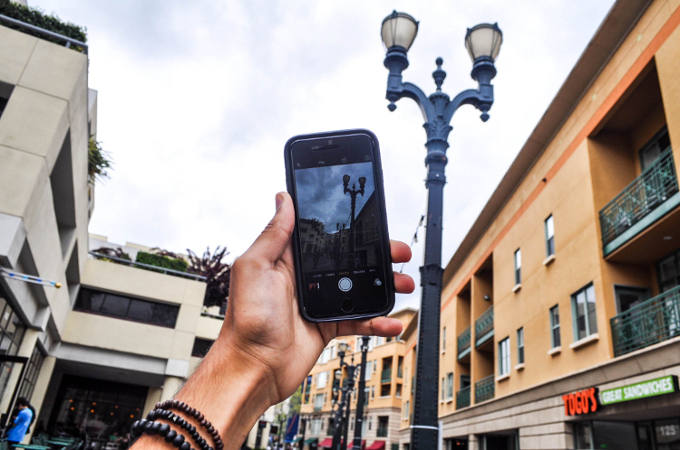Micro-moments and how they’ll affect me?

What are micro-moments?
We live in an increasingly “right here, right now” world.
Much of this is due to the fact that the majority of us these days have a smartphone to hand at all times. This means we have in our pocket the modern-day equivalent of an encyclopaedia, a phone directory, a town guide and numerous other reference sources.
It also means that whereas even just a couple of years ago we would have specific periods of the day when we went online, nowadays we are spontaneous.
We are online for short bursts frequently. It’s as if we’ve gone from online marathons to online sprints. Instead of one or two starts, we’re off dozens of times a day, every day.
They are instances when we want to know, buy and do things or go places. We want to know there and then. We expect to do so.
These are called “micro-moments.” For both buyers and brands, they’re a significant shift in the way of doing and thinking about all things online.
Micro-moments defined
Google termed the phrase in 2015 to describe the instant when people automatically use a device to satisfy a query, want or need – those split-seconds when we need help in making up our minds.
It is a phrase to describe a phenomenon that we all do and are part of creating, even though we never knew it. We have all for some years been naturally looking up an array of things on a device – increasingly a smartphone.
We have a micro-moment moment when we get online to learn, watch, buy, see, discover or do. These are instances packed with intention during which our minds are influenced or made up.
Think mobile. Think speed.

Those potent little computers we have to hand mostly 24/7 mean that now we expect businesses and brands to give us precisely what we want without any hassle of searching around.
We assume with growing confidence that through the might of our little screens we can get straight to the point rather than looking for a needle in the haystack.
It’s a foundational change in the manner we live our online lives. It’s the next stage and the future.
For advertisers and marketers, it’s absolutely massive.
It means online users will often research something from several trusted sources, and then make their choice. There are no longer just a few sporadic “a-ha!” moments of truth; now there are countless moments that matter. So, for instance, you might look up where to eat at the weekend on your smartphone while you’re having a coffee after the gym. Then you reach work. At lunchtime, you book the restaurant that grabbed you over that morning coffee.
As a business, perhaps more so a small business, it means you need to pull people in at that first instant. People are searching across multiple devices, for multiple reasons….and as a brand, you only really get one chance now.
You likely won’t get a second chance. There’s a huge choice out there. You have to be the best.
Even in 2015, Google discovered that 69 per cent of online consumers acknowledged that the point in time, calibre, or how appropriate a brand’s delivery is swayed their interpretation of the company.
So the brands that will be successful in the future are the ones that put effort into these aspects. They need to reach potential customers in the right way and at the right time with the right approach. They need to connect.
The changing face of search
Micro-moments are multiplying. Not many of us can even recall what life was like before we could go, do, learn or buy by using our devices, and this is increasingly our mobile phones.
Everyone now knows they’ll get the details they desire with fewer search words. It’s expecting more for less. And getting it.
And it helps marketers realise which moments most matter most. It is the future. Particularly for small businesses.
This “in the moment” mentality also plays a big part in the rise of video. Particularly with today’s younger audience.
We want answers now. Increasingly a video is a quicker way to find the answer regarding certain queries such as how to increase page margins on a Word document, how to fix the oven or how to change a bulb on the car.
Insatiable desire for information and speed

On a daily basis there’s an incessant desire for instant information – and that needs to be super-fast and accessible on various devices. Or people will go elsewhere, within seconds.
But if you get it right… Google recently discovered that 70 per cent of smartphone owners who bought an item in a shop had looked on their device for applicable info before parting with their cash. It also found when people searched on their mobile, 92 per cent made an associated purchase.
In fact, the same Google research revealed that it’s not just about buying things there and then. It found that 68 per cent of people searched to assist their decision-making about something for the future (with 97 per cent of these on mobile phones).
What helps people in micro-moments?
When a query or a want or need turns up, most of us trust our phones to come up with the right answers. In fact Google found that 96 per cent of smartphone users turn to their mobiles when they need to find out something.
Furthermore, in 2016 Google monitored 1,000 smartphone users on what their search usage was. It discovered that when it comes to searching:
• 40 per cent of users had their queries answers by a search engine (87 per cent turn to search first).
• 19 per cent visited a retailer’s app or website.
• 19 per cent went to another app or website.
• 15 per cent visited a store or other location.
• 12 per cent used a map.
• 10 per cent looked at images/photos on a site or app.
• 8 per cent asked someone online or via a call or text.
• 6 per cent watched an online video.
• 6 per cent used social media.
• 6 per cent connected with a business.
(More on this study can be read here: thinkwithgoogle.com/consumer-insights/mobile-search-consumer-behavior-data/ )
Does the time of the day matter with searches?
Yes, and the time of searches in the day can be just as vital to customer relationships and sales as to what season of the year it is.
Google did a bit more looking into this and discovered that, not surprisingly, computer and tablet searches most often happen – and overtake mobile searches – during office hours (8am to 6pm). This includes lunchtime. But not all businesses follow these patterns.
Google’s VP of Marketing Lisa Gevelber says:
“Mobile empowers people to be nimble. They can organise themselves as much (or as little) as they like because they know their smartphone is there for them. And, they expect brands to respond by understanding their needs and addressing them right now.
“Consider baby products. In that category, mobile searches reign supreme throughout the day, but show a pronounced peak around 9pm. This behaviour reflects the broader context and mindset of the people behind those queries. After the baby is asleep and parents have some time for themselves, it’s a more fitting time to do some (mobile) research on infant swings and cribs.
“Different queries or subtopics might peak at different times. By digging deeper into various types of intent within your category, you can see interesting patterns during a typical day.”
Its key then to assess these rhythms so websites can be there offering the right thing at the right time. Everything is about helping people as much as possible, and in as personal a way as possible. It’s as if your website or app’s users are your friends.
Why location matters more?
As far back as September 2015 Google’s Lisa Gevelber stated that “near me” or “nearby” Google searches doubled in 2014.
But now she reports that has moved forward – since then searches without the words “nearby” or “near me” have increased by 150 per cent. The reason is that people now expect a search finding to deliver local findings.
Increasingly, we assume that what we are given after a search is relevant to us in terms of place and personality.
“The trends are clear, and we as marketers need to take notice,” Lisa says. “People may be sharing less, but they still expect relevant, accurate information. In fact, people increasingly assume they’ll receive relevant information with fewer explicit inputs.
“They expect a simple word or phrase to deliver the results they’re after when they search. In essence, people are saying ‘don’t make me exert extra effort when you should already know exactly what I want’.”
Companies prepared to go above and beyond will see the best results. For instance, around two-thirds of people searching on their smartphones are much more likely to buy from a brand that has an app or site that is adapted to be relevant to where they are. This is not just desired now – it’s demanded and expected.
So, what’s next in micro-moments?
According to Google’s Senior Vice President of Ads & Commerce, Sridhar Ramaswamy, we are going to keep expecting even more useful details that are even more tailored to us – and to get them even more swiftly.
“I like to think of mobile as the force that’s accelerating a train we’re all now aboard,” he says. “We’re heading toward an age of assistance where, for marketers, friction will mean failure, and mass messages will increasingly mean ‘move on’.
“Successful marketers will have a much deeper understanding of their customers at every encounter. They’ll focus on acquiring a detailed, data-driven view to really know them and help them along their individual journeys.”
He thinks it’s “critical” to get it right – because shrewd changes made today lay the preparations for the future.
“This future is what we at Google have been building toward for the last 18 years with Search.”

